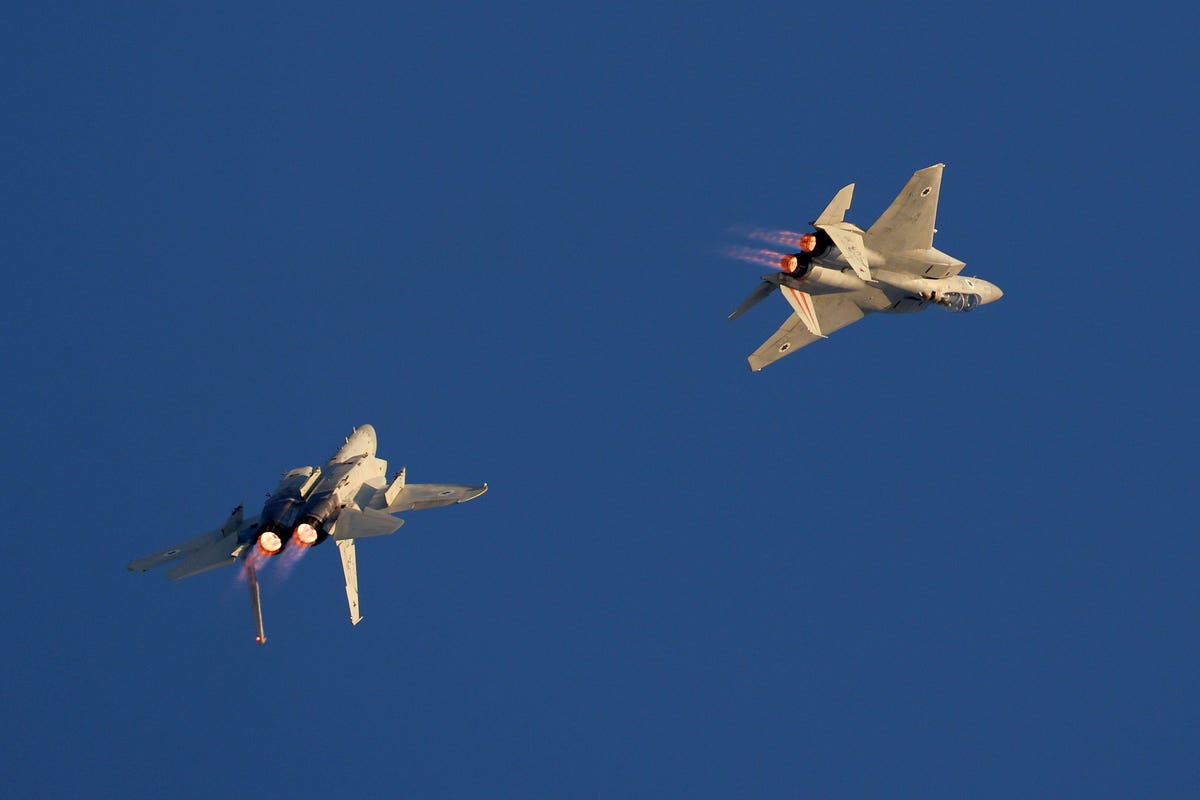Israeli airstrikes on Syria are still a regular occurrence over a decade after Israel initiated its preemptive air campaign against Iran-related targets in its war-torn northern neighbor.
On Sunday morning, July 2, Israeli airstrikes struck areas near Syria’s Homs, causing unspecified material damage. One of the Syrian air defense missiles, likely an antiquated Soviet-built S-200, fired in response flew over Israel and exploded over the southern city of Rahat. Israel responded by targeting an air defense battery and other unspecified targets.
The strikes were a reminder that Israel’s air campaign over Syria, primarily aimed at Iranian entrenchment there, is far from finished. Recent reports indicate that Iranian efforts to strengthen its foothold in the Arab country and bolster the capabilities of the Hezbollah group in neighboring Lebanon are still very much active. Iranian success in either country could undercut Israel’s concerted decade-long effort to prevent the implementation of these overlapping strategic projects.
A June 30 report in the Israeli newspaper Maariv cited unnamed Israeli military sources claiming Hezbollah has doubled its air defense arsenal and could attempt to deter or actively interfere with Israeli Air Force (IAF) operations over Lebanon.
“Hezbollah’s decision to restrict the Israeli Air Force with available Russian air defenses, SA-8 and SA-22, is a fundamental change in Hezbollah’s strategic concept, within which attempts are being made to restrict the Israeli Air Force’s freedom to operate during normal hours,” the sources said. They also cited estimates which believe Hezbollah may have “doubled the amount of air defense systems in its possession during the last five years and that these defense systems are based mainly on modern Iranian systems.”
It’s unclear what Iranian systems may have made it to Lebanon. The SA-8 and SA-22, NATO reporting names for the Russian low-altitude 9K33 Osa and medium-range Pantsir-S1, mentioned are not in the same category as Russia’s long-range S-300/S-400 systems or Iran’s Khordad 15/Bavar-373s. Nevertheless, they could pose an obstacle to Israel’s Syria campaign. After all, IAF jets have often fired standoff missiles against fixed targets in Syria while flying unopposed within sovereign Lebanese airspace. That could soon change if the assessments in that report are indeed correct.
There is also the salient fact that Israel began its Syria campaign in 2013 to prevent Iran from transferring advanced air defenses to Hezbollah in its Lebanon stronghold through Syria. If Tehran managed to transfer and set up even some medium-range systems, it could claim a small victory over Israel, despite sustaining substantial casualties and material losses during previous ill-fated attempts.
Other reports indicate that Iranian attempts to deploy its most advanced air defense missile systems in Syria are ongoing.
In February, Iranian state television reported that it’s “very likely that we will witness the supply by Iran of radars and defense missiles, such as the Khordad 15 system, to reinforce Syria’s air defenses.”
(Concurrent reportage suggest Iran plans on deploying another indigenous high-altitude air defense system, the Bavar-373 armed with the new Sayyad 4B missile that can purportedly hit targets from 186 miles away. Either system would greatly improve Syria’s limited air defenses, which rely on Pantsirs and vintage S-200s.)
In April, Reuters reported that Iran had smuggled military equipment into Syria among the humanitarian aid it flew into the country following the devastating Feb. 6 earthquake. Tehran transferred via air “advanced communications equipment and radar batteries and spare parts required for a planned upgrade of Syria’s Iran-provided air defense system in its civil war.”
Deployment of the Khordad 15 or Bavar-373, or both, would likely constitute a red line for Israel. The IAF relies on standoff munitions to evade or destroy Syrian Pantirs and S-200s. The Iranian systems’ superior ranges could make this more difficult – or require larger numbers of long-range munitions to overwhelm and destroy.
Although that’s presuming Iran can assemble and activate such systems before coming under a preemptive IAF attack. Such action is not without precedent. In 2018, an Israeli air attack destroyed an Iranian Russian-built Tor medium-range system Iran attempted to set up in Syria’s T-4 air base in central Homs province. Any Khordad 15/Bavar-373 deployment would be much more threatening to the IAF than that Tor system and would likely incur a similar strike.
Sunday morning’s events and all these recent reports and rumors about Iranian air defense deployments in Syria and Lebanon strongly indicate that the IAF’s campaign in the former country is unlikely to end anytime soon.
Read the full article here




